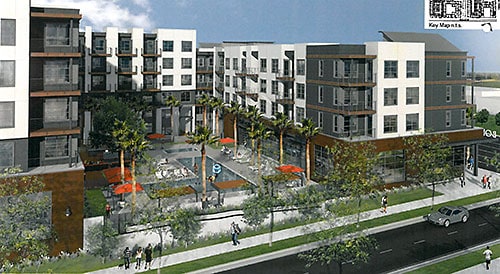Gold Line has two-year funding window to reach Claremont

The Gold Line is making moves, but it still needs approximately $450 million to get to Claremont.
The Foothill Gold Line Construction Authority announced Wednesday it has selected a design-build team, Kiewitt-Parsons, which will construct the length from Glendora to Pomona for $805.6 million, with an option to build to Montclair. This comes on the heels of the Authority getting $126 million in transportation funds from the San Gabriel Valley Council of Governments (SGVCOG) to guarantee the rail reaches Pomona by 2025. according to the San Gabriel Valley Tribune
But there’s still one big unknown—bringing the longest light rail system in the Metro stable to the City of Trees. In addition to the hefty Claremont price tag, an additional $94 million is needed to build the line to Montclair, according to Construction Authority CCO Lisa Levy Buch.
The deadline is September 2021, she added, giving Metro just over two years to find a funding source.
The $450 million price tag is “fully loaded,” which means it includes design-build costs, administrative costs and the purchase of trains.
Construction Authority CEO Habib Balian told the COURIER it is beginning a process of looking at stakeholders and legislators “to see where potential dollars are available” to get the Claremont leg of the project built. Half of the $94 million price to get to Montclair would be coming from Measure I, a San Bernardino County half-cent sales tax to fund transportation projects, Mr. Balian said.
As for the two-year deadline, Mr. Balian noted it was determined to be enough time to secure the funds.
“We wanted enough time to seek the additional funding,” Mr. Balian said. “Two years is what we would need to get these additional funds.”
If the funds were procured by that time, the Gold Line would come to Claremont by 2028. If not, the procurement process starts over.
If prices go down, the Construction Authority has the option to re-procure the project at a lower price.
The Gold Line extension was kick started by the passage of Measure M, a half-cent sales tax that received nearly 72 percent approval in 2016.
The plan suffered a setback late last year, when bids came back way over initial estimates. That led the Construction Authority to separate the project into two phases—from Glendora to La Verne, and from Pomona to Montclair.
Mr. Balian said while Measure M wasn’t intended to fully fund the Gold Line, the current project entered a market at a time where tariffs are high and the labor market is hot, thus leading to bids coming in higher than expected.
“Our job is to build as much as we can,” Mr. Balian said.
The extra money from the SGVCOG has inched the line to Pomona, where it will stay for now. Designs of the Pomona station feature an impressive mixed-use transit-oriented development (TOD) featuring a parking garage and a mix of studios, one-bedroom and two-bedroom residences.
Claremont has a future transit-oriented development of its own—Village South. The city is in the middle of crafting the specific plan for the major mixed-use project, partially funded by a $418,000 grant from Metro.
Claremont Community Development Director Brad Johnson said the city is still disappointed the Gold Line is ending in Pomona and not reaching Claremont for now. But Village South would still be a TOD site because of Metrolink.
As for Village South itself, “The overall development of all the area may just not happen as quickly without the Gold Line being here,” Mr. Johnson said. “I don’t think it’s going to slow down developers from coming here.”
Mr. Johnson said he has heard a little bit of discussion on ways to get Claremonters to the Pomona station once it is built, but nothing concrete.
The city has spent the last few years discussing the myriad changes to the Village to make way for the Gold Line, including a bridge over Indian Hill Boulevard, moving the Metrolink station east of College Avenue and building a massive parking garage at the current site of the Metrolink parking lot that would hold up to 1,200 cars.
The bridge, specifically, caused a good amount of grief in the city. The council initially voted against it in 2016 after heeding calls from the community, but then voted for it in 2017 after the California Public Utilities Commission (CPUC) mandated the bridge to be built due to safety and traffic concerns.
Mr. Balian said now that funding to Pomona has been secured, the next challenge is to get the Gold Line to Montclair.
Despite the steep price threshold, confidence seems high.
“This is a regional system with regional benefits. Everyone has to be behind it,” he said. “Hopefully we’ll iron this in within the next two years and get the project completed by 2028.”
Claremont Councilmember Ed Reece, who was part of the voting body that unanimously agreed to give the Construction Authority the extra transportation funds to get to Pomona, issued a statement late Wednesday afternoon noting that getting the Gold Line to Claremont “has always been the ultimate goal of the city council.”
“While not funding the line to Claremont, the unanimous decision by the SGVCOG brings the Gold Line one step closer to our community,” Mr. Reece said. “The city council will continue to work with the Foothill Gold Line Construction Authority, Metro and our neighboring cities to identify and secure funding to complete the line all the way to Montclair.”
—Matthew Bramlett
news@claremont-courier.com










0 Comments